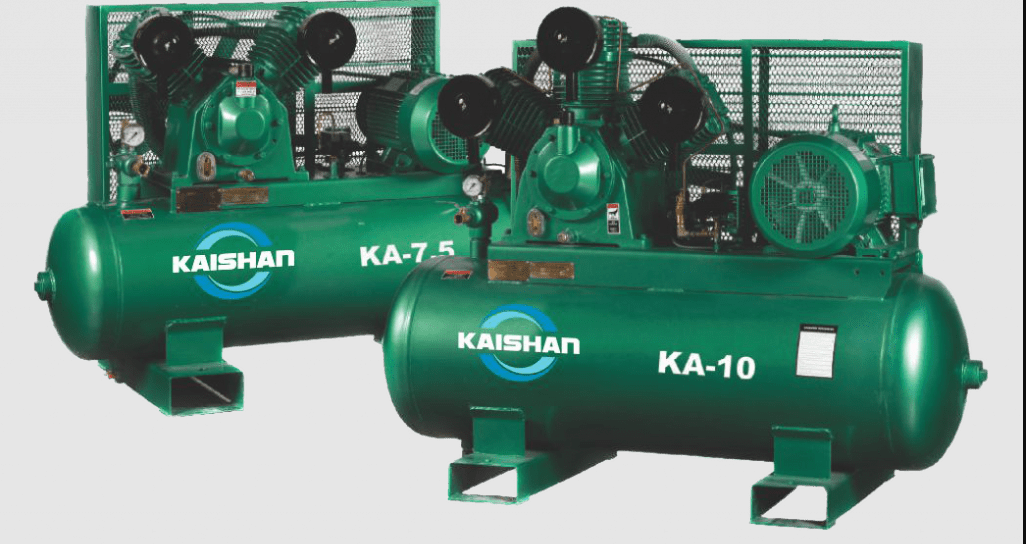A reciprocating air compressor is a device that converts electrical energy into mechanical energy, which in turn compresses the surrounding air. Reciprocating compressors are most commonly used in pneumatic tools and tire inflation of tires. The compressor has two basic components: an engine, which rotates the crankshaft; and a shaft, or piston and cylinder assembly, which transfers pressure from the crankcase to the top of the piston.
Different Types of Reciprocating Compressor
There are many different types of reciprocating compressors for various applications. They can be either oil-free or oil-lubricated. They fall into two different categories: single-stage compressors and two-stage reciprocating air compressors. Single stage compressors are more widely used because they are less expensive and provide high airflow rates. Single-stage compressors have a compression ratio of 3:1 to 6:1 (the force of the air divided by its original volume).
Compressor Engine
The engine is the source of all power. The reciprocating compressor engine can be powered by a battery, an electric motor, or an internal-combustion engine. Reciprocating compressors equipped with internal combustion engines use an air cooling system. They are classified as direct drive machines or belt-driven machines. Belt-driven machines allow the engine to be placed farther away from the compressor and are considered more durable than direct-drive compressors.
Stroke Length and Piston Speed
The crankshaft moves the piston in a reciprocating motion via the connecting rod. The stroke length equals the distance between the "TDC" (top dead center) and the "BDC" (bottom dead center) of an individual cylinder. The stroke length determines how much air compression is possible, which affects performance. In reciprocating compressors, the stroke length is measured in terms of its piston speed. Piston speed ranges from 0 to approximately 2800 rpm. The higher the piston speed, the greater the compression ratio. The stroke length should be adjusted to obtain the desired force and flow rate (GPM).
Application of Compressor
Reciprocating air compressors are used in a variety of industries for a variety of applications: construction and maintenance, manufacturing, transportation, consumer goods, etc. Reciprocating compressor and workload.
A reciprocating compressor requires a certain amount of work to function. The amount of work required depends on several factors, including the power required to run the engine, installation cost, noise level, and maintenance requirements. Reciprocating compressors can operate successfully at a range of load levels as long as all other factors are considered.
Compressor Types
There are two compressor types: reciprocating and rotary screw. Reciprocating compressors require more maintenance and produce a higher noise level than rotary screw compressors. They are also less fuel-efficient because they are driven by a crankshaft, which is more complex than the rotating screws on a rotary compressor. Reciprocating compressors fall into two categories: single-stage and two-stage compressors. Single stage reciprocating air compressors are less expensive than two-stage models.
Single Stage or Two Stage Compressor?
Although single and two-stage compressors share similar components, they have significant differences in the compression process. This section will explain the advantages of each type.
Single Stage Compressors
A single stage reciprocating air compressor has two pistons, one inside the other, rotating on a common crankshaft. The smaller piston is called a drive piston and is driven by an internal combustion engine or electric motor. The drive piston is connected to the larger piston, called a collector piston via a connecting rod. The drive piston compresses air in the cylinder and forces it into a pipe network that distributes compressed air throughout the facility. The collector piston is connected to the stationary base via an adjustable support device, allowing the collector piston to move forward during compression and backward during decompression.
Two-Stage Compressors
A two stage reciprocating air compressor has separate cylinders for compression and expansion of air, each powered by its separate engine or electric motor. The two-stage compressor has four pistons, one in each cylinder. Two-stage compressors operate at higher rpm than single-stage compressors, which helps reduce noise and vibration levels. Two-stage compressors produce a higher quality of air and are more efficient because they can maintain low pressures during expansion.
Reciprocating Air Compressor Workings
In a reciprocating air compressor, the piston is connected to the crankshaft via the connecting rod. The crankshaft is controlled by the engine that turns it. The air passes through the air inlet, into the bottom of the piston, and is compressed into a much smaller space, i.e. more pressure per unit volume. The compressed gas then moves to the top of the cylinder, out of an exhaust port, and into a pipework network that distributes it throughout a facility. This process happens repeatedly until turned off by an operator or until there is no more air to compress. The air then needs to be freed from the compression process and sent to an outlet. The outlet could be a high-pressure pipe or an exhaust system.
Conclusion:
These days, many of these utility-grade reciprocating compressors are available in various sizes and configurations. The reciprocating air compressor has various uses. It can be used in industries like mining, construction, mining, and construction. They are essential to manís pursuit of peace and progress. The reciprocating air compressor is being used for many purposes like making sure that the people have enough air for breathing, recycling unwanted air into useful air, or as a tire inflator for vehicles to help them deflate their tires quickly.
A reciprocating air compressor is a device that converts electrical energy into mechanical energy, which in turn compresses the surrounding air. Reciprocating compressors are most commonly used in pneumatic tools and tire inflation of tires. The compressor has two basic components: an engine, which rotates the crankshaft; and a shaft, or piston and cylinder assembly, which transfers pressure from the crankcase to the top of the piston.





